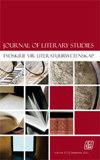德莱顿的《圣塞西莉亚节之歌》和C.S.刘易斯的《纳尼亚传奇》中的当代性、宗教教育和音乐
IF 0.1
4区 文学
0 LITERARY THEORY & CRITICISM
引用次数: 0
摘要
在英国文学中,我们有时会发现圣经中的信息被改编为当代读者,并可能被解释为隐藏的宗教指示,如约翰·班扬的《天路历程》。本研究通过呈现和比较约翰·德莱顿的新古典主义诗歌《圣塞西莉亚节之歌》和C.S.刘易斯的奇幻七部诗集《纳尼亚传奇》,深入探讨了这一观点。这两个文本都载有基督教关于信仰和道德的教义,鉴于其各自的历史和文化背景,符合天主教教理问答的要求。德莱顿和刘易斯在他们的文本中融入音乐的方式遵循了一种共同的模式,这种模式作为这种结构化分析的统一因素,并证明了比较研究的合理性。本文章由计算机程序翻译,如有差异,请以英文原文为准。
Contemporaneity, Religious Instruction and Music in Dryden’s “A Song for St. Cecilia’s Day” and C.S. Lewis’ The Chronicles of Narnia*
Summary In English literature, we sometimes find biblical messages that have been adapted to the contemporary reader, and may be interpreted as veiled religious instructions such as John Bunyan’s The Pilgrim’s Progress. The present study delves into this idea by presenting and comparing John Dryden’s neoclassical poem, “A Song for St. Cecilia’s Day”, with C.S. Lewis’s fantasy heptalogy, The Chronicles of Narnia. Both texts contain the Christian doctrine of faith and morals and fulfil the requirements for the Catholic catechism, given their respective historic and cultural context. The way that Dryden and Lewis incorporate music in their texts follows a common pattern that serves as a unifying factor for this structured analysis, and justifies a comparative study.
求助全文
通过发布文献求助,成功后即可免费获取论文全文。
去求助
来源期刊

Journal of Literary Studies
Multiple-
CiteScore
0.50
自引率
0.00%
发文量
0
期刊介绍:
The Journal of Literary Studies publishes and globally disseminates original and cutting-edge research informed by Literary and Cultural Theory. The Journal is an independent quarterly publication owned and published by the South African Literary Society in partnership with Unisa Press and Taylor & Francis. It is housed and produced in the division Theory of Literature at the University of South Africa and is accredited and subsidised by the South African Department of Higher Education and Training. The aim of the journal is to publish articles and full-length review essays informed by Literary Theory in the General Literary Theory subject area and mostly covering Formalism, New Criticism, Semiotics, Structuralism, Marxism, Poststructuralism, Psychoanalysis, Gender studies, New Historicism, Ecocriticism, Animal Studies, Reception Theory, Comparative Literature, Narrative Theory, Drama Theory, Poetry Theory, and Biography and Autobiography.
 求助内容:
求助内容: 应助结果提醒方式:
应助结果提醒方式:


